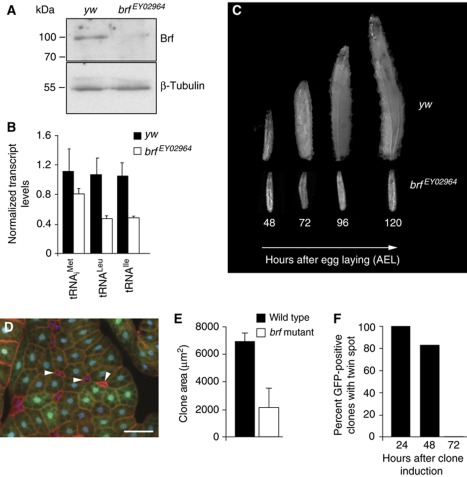Figure 1.
Loss of Brf function leads to severe growth defects in Drosophila larvae. (A) Brf protein levels were reduced in brf mutant (brfEY02964) larvae compared with controls (yw) 48 h after egg laying (AEL), as determined by immunoblot. (B) Levels of Pol III-dependent transcripts were significantly decreased in brf mutant larvae compared with control larvae 48 h AEL, as measured by qRT–PCR (P<0.05, Student's t-test). Error bars indicate s.e.m. (C) brf mutant larvae are growth arrested. Images of control and brf mutant larvae throughout larval development (48–120 h AEL) are shown. (D) brf clones (non-GFP, arrowheads) were induced by flp/FRT-mediated recombination during embryogenesis and visualized in the fat body 120 h AEL. Blue, DAPI staining; red, actin; green, GFP. Scale bar, 100 μm. (E) brf mutant clones in wing discs were induced 72 h AEL and clone areas measured 120 h AEL (n=100 twin spots). (F) brf mutant clones were induced and scored in wing imaginal discs at the times indicated post clone induction. The viability of mutant clones was assessed by counting the percentage of wild-type clones that were still paired with a brf mutant twin spot. Genotypes used in (D–F): hsflp122;+; FRT82B, brfEY02964/FRT82B, ubi-GFP.

